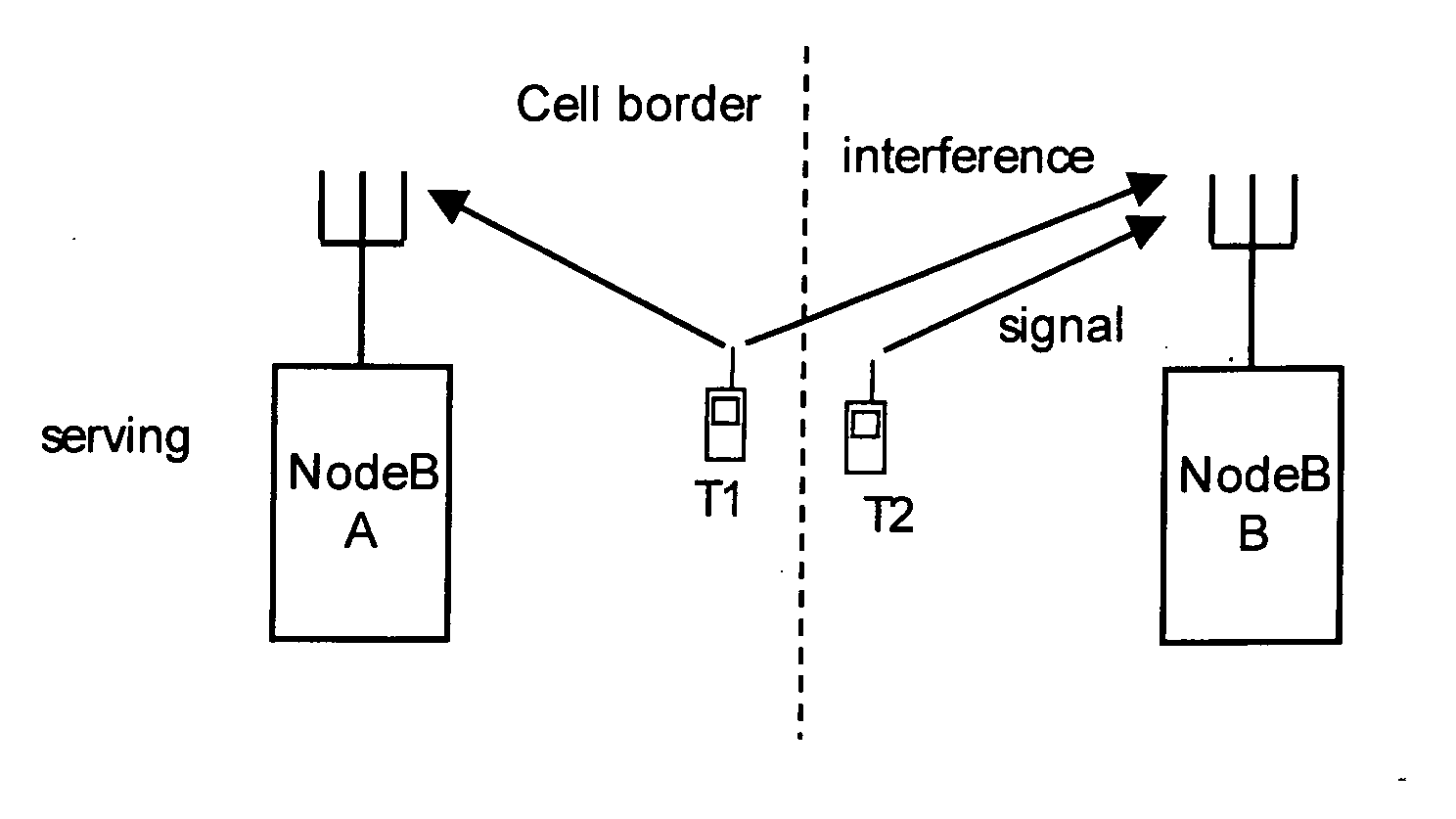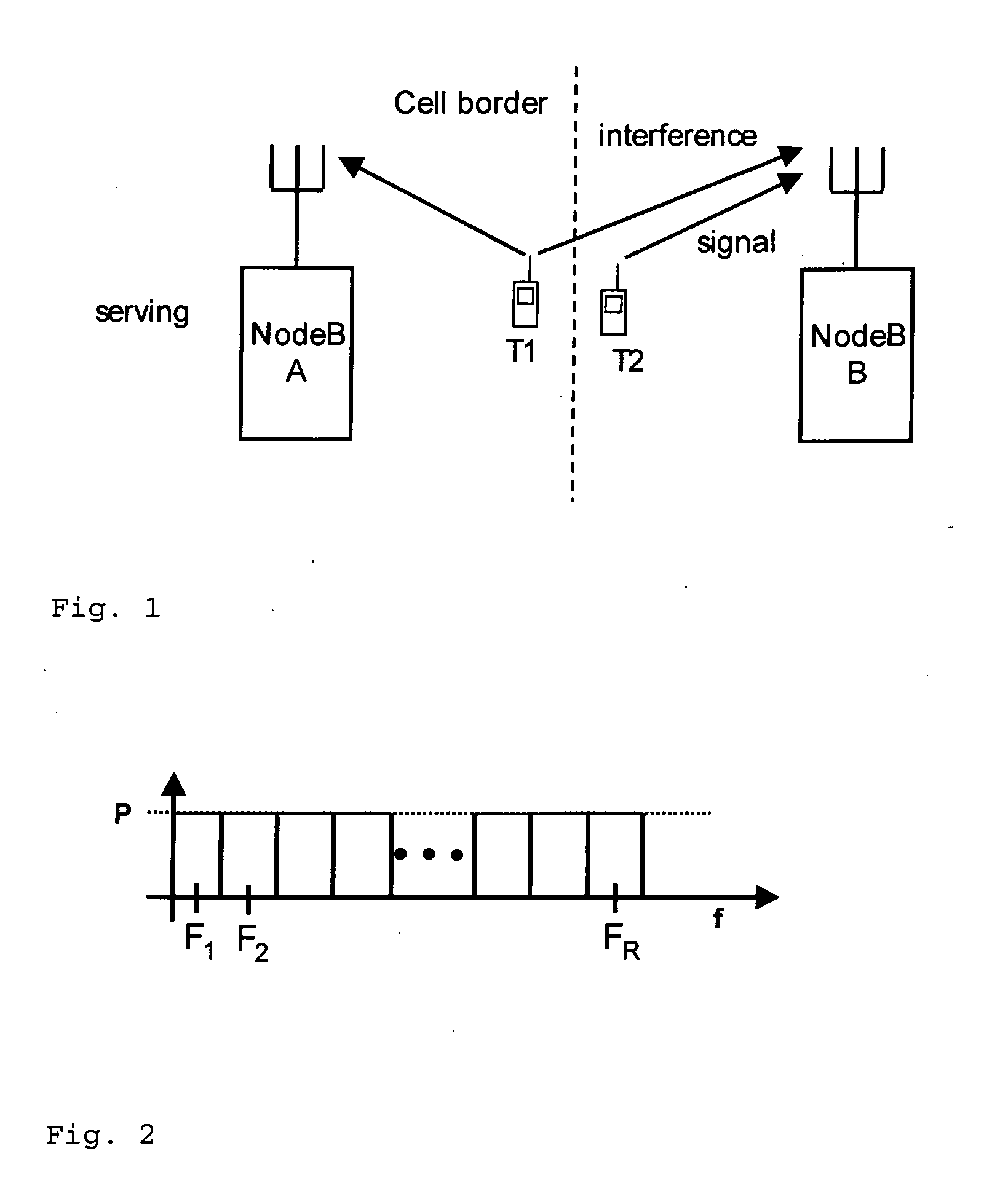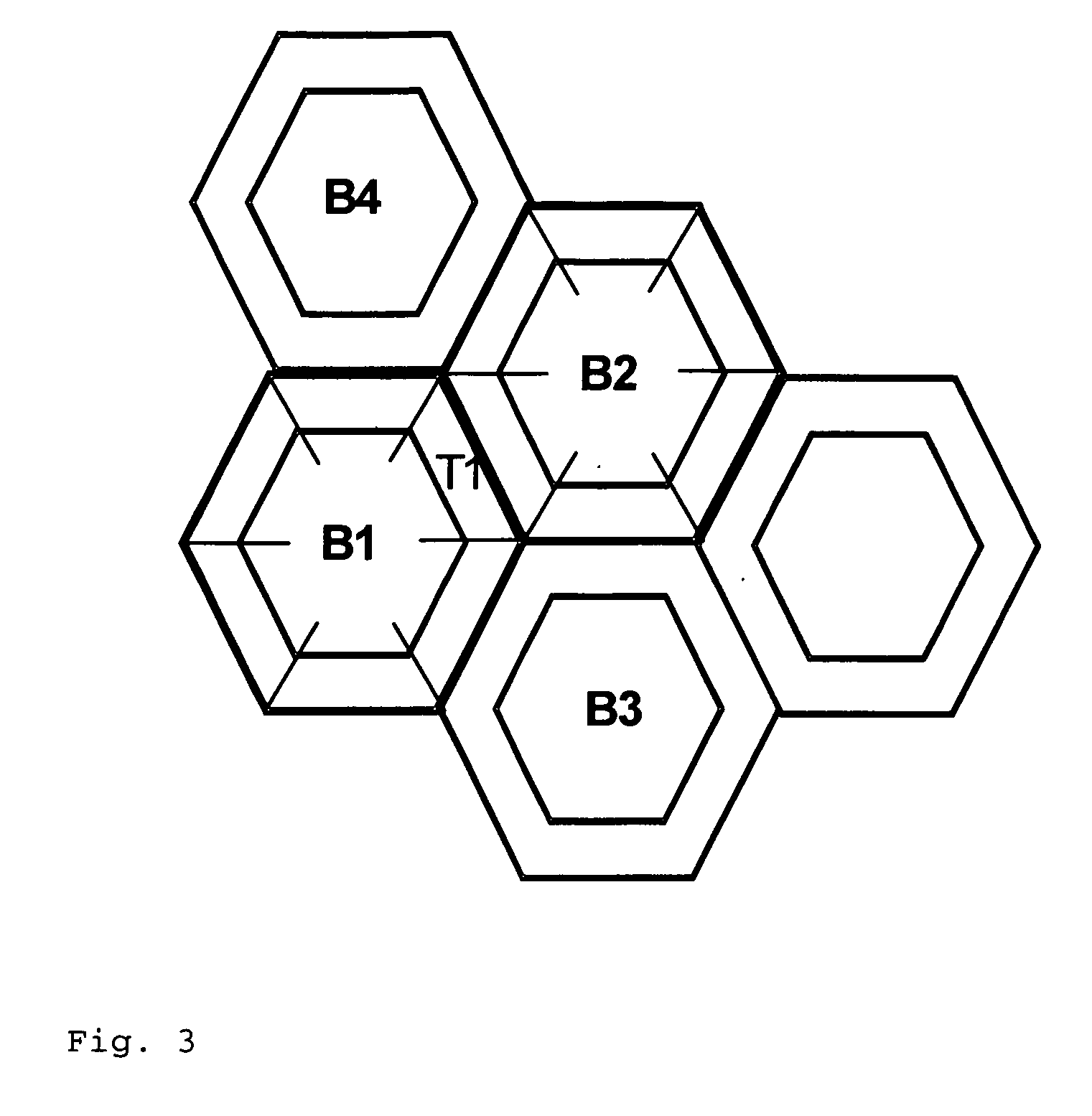Method for uplink interference coordination on demand basis with cell identification, inter-cell interference detection and downlink measurement, a base station, a mobile terminal and a mobile network therefor
a technology of inter-cell interference and coordination, applied in the field of coordination of interference, can solve the problems of reducing the available uplink resources per cell very significantly, waste of resources for the inner area of a cell, and reducing the uplink capacity of a cell. , to achieve the effect of good utilization of the available uplink resources
- Summary
- Abstract
- Description
- Claims
- Application Information
AI Technical Summary
Benefits of technology
Problems solved by technology
Method used
Image
Examples
Embodiment Construction
[0052] A mobile network according to the invention comprises mobile terminals and base stations.
[0053] Each of said mobile terminals is connected to at least one of said base stations, and the base stations are in turn connected via base station controllers to a core network.
[0054] The mobile terminals comprise the functionality of a mobile terminal for transmission and reception in a single frequency network as e.g. an OFDM network, i.e. they can be connected to a mobile network by means of a base station.
[0055] Furthermore, a mobile terminal according to the invention comprises means for evaluating in which cell or region of a cell it creates interferences by means of downlink interference or path loss measurements, and the mobile terminal comprises means for signaling to its serving base station said measurements or results deduced from said measurements.
[0056] The base stations comprise the functionality of a base station of a single frequency network as e.g. a WLAN or an OF...
PUM
 Login to View More
Login to View More Abstract
Description
Claims
Application Information
 Login to View More
Login to View More - R&D
- Intellectual Property
- Life Sciences
- Materials
- Tech Scout
- Unparalleled Data Quality
- Higher Quality Content
- 60% Fewer Hallucinations
Browse by: Latest US Patents, China's latest patents, Technical Efficacy Thesaurus, Application Domain, Technology Topic, Popular Technical Reports.
© 2025 PatSnap. All rights reserved.Legal|Privacy policy|Modern Slavery Act Transparency Statement|Sitemap|About US| Contact US: help@patsnap.com



